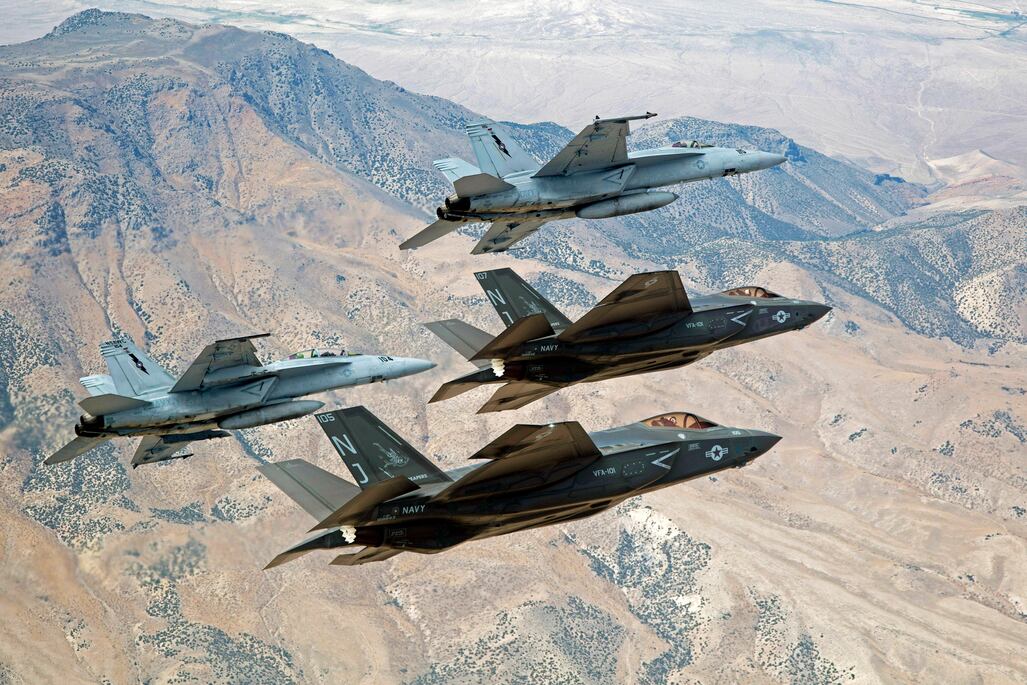WASHINGTON — Houston, the Pentagon’s new space acquisition agency may have a problem.
In its proposed funding bill for fiscal 2020, House defense appropriators are seeking to cut off funding for the Space Development Agency until the Defense Department meets several conditions.
While the legislation still has a long way to go before it becomes law, it could spell trouble for the newly established SDA — especially if Senate lawmakers raise similar objections.
RELATED

Acting Defense Secretary Patrick Shanahan signed off on the SDA in March. The agency is supposed to be a fast acquisition arm for emerging space capabilities that may not have a validated requirement, and its first task is to field a layer of low-Earth orbit satellites capable of transferring data among the military’s terrestrial and space assets.
However, critics have contended that SDA’s purpose has not been defined clearly enough, a position that House defense appropriators seem to find valid.
The bill stipulates that no funding can be spent on the organization until the Defense Department submits a detailed plan to establish the SDA, what projects it will take on over the next three years and how much funding will be required for those efforts. It also wants information about how SDA and the Air Force will collaborate on a holistic space architecture, and the process both organizations will use to guide prototyping efforts into fully fledged programs.
Lawmakers also want to know where the SDA will be based and how many personnel will staff it — a prospect that could bring local jobs, a boon to any member of Congress — as well as a plan to transfer SDA from the Defense Department to the Air Force or Space Force by the end of FY22.
The bill echoes concerns raised by Air Force Secretary Heather Wilson, who has vocally opposed the creation of SDA. In February, she told reporters that she didn’t understand why a new space acquisition agency was needed, given the establishment of the Space Rapid Capabilities Office and the Air Force’s own work to make the Space and Missile Systems Center more efficient.
Even as Shanahan pressed forward with the establishment of SDA, naming Fred Kennedy as head of the organization, Wilson continued to speak out against it.
“Let me be clear: The United States Air Force is funding the development of low-Earth orbit systems and commercially based systems for some of our missions,” Wilson told the audience at the Space Symposium in April. “But launching hundreds of cheap satellites into theater as a substitute for the complex architectures where we provide key capabilities to the war fighter will result in failure on America’s worst day if relied upon alone.”
While the House appropriations bill can be seen as a modest victory for Wilson, it may be a Pyrrhic one: It also orders that funding the Air Force’s next generation of missile warning satellites be cut by half until the Defense Department meets its requirement to supply more information about SDA.
The service’s next-generation Overhead Persistent Infrared program has been touted by the Air Force for its rapid approach. In fact, the service is seeking $632 million in FY19 because the program is moving so quickly that it has met milestones quicker than expected and needs more money to continue prototyping the sensor payload, its acquisition executive Will Roper said in April.
House appropriators’ desire to put limits on the next-gen OPIR could stem from worries about whether that constellation may be too similar to one of the systems that the Space Development Agency intends to field.
After fielding the initial “transfer layer” of low-Earth orbit satellites meant to augment the department’s data transfer capabilities, the SDA plans to launch a “tracking layer” of missile warning satellites, SDA head Kennedy said last month.
Kennedy also suggested that the next-gen OPIR could be changed or reduced in scope if the tracking layer was successful.
“Rather than wait to 2025” to get the next-gen OPIR in orbit, “what I’m arguing is that we try to put up some form of capability in 2022 and show that we can do it. We may not have perfect global coverage, but we’ll have some level of coverage — at least regionally — addressing most of that threat,” he said.
Valerie Insinna is Defense News' air warfare reporter. She previously worked the Navy/congressional beats for Defense Daily, which followed almost three years as a staff writer for National Defense Magazine. Prior to that, she worked as an editorial assistant for the Tokyo Shimbun’s Washington bureau.








